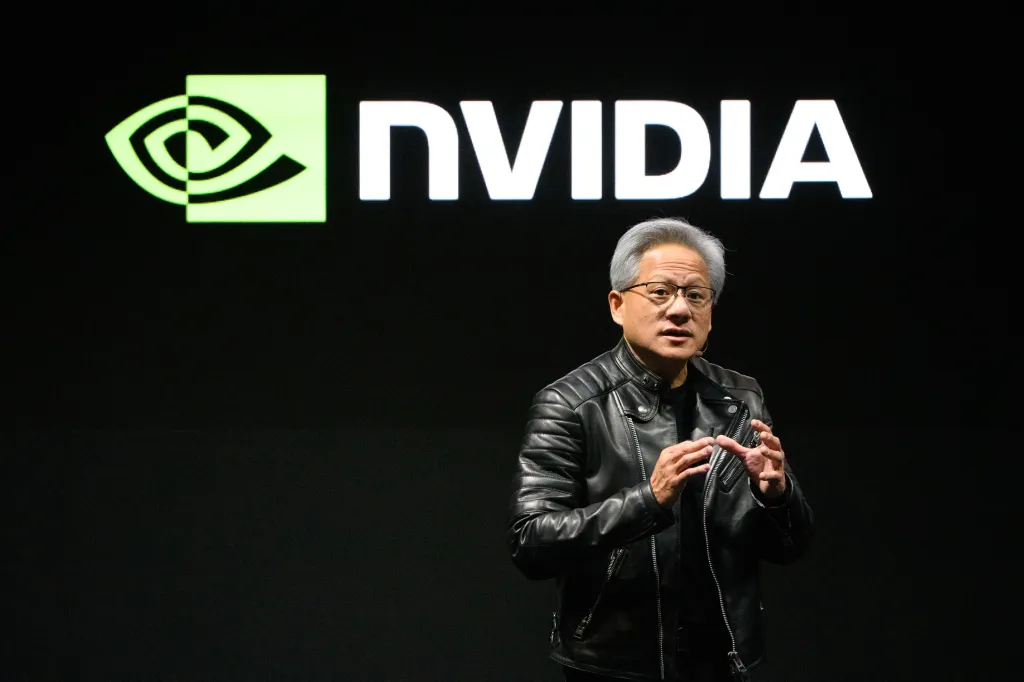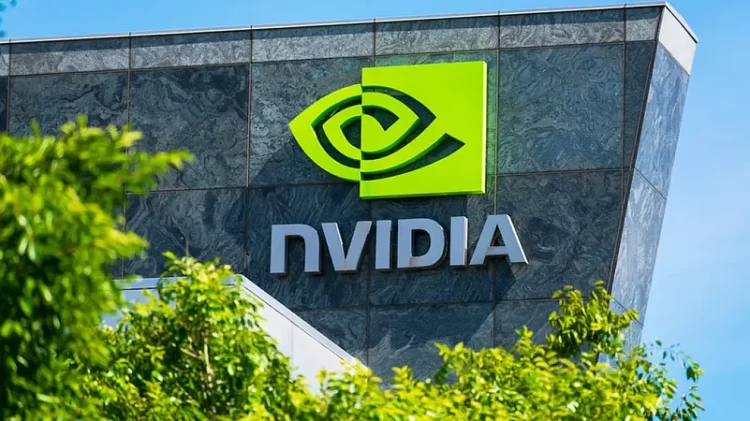Introduction
In the past few years, NVIDIA has emerged as one of the most important players in the technology sector, especially with the rise of artificial intelligence (AI). The company’s stock has surged to unprecedented levels, making it one of the most valuable semiconductor companies globally. At the heart of NVIDIA’s remarkable growth is its pivotal role in powering AI technologies, from machine learning to deep learning, gaming, and autonomous driving. However, as NVIDIA’s market capitalization hits new highs, investors and analysts are left wondering: Can the company’s AI-driven profit growth continue to sustain its stock price?
This article will explore the key factors behind NVIDIA’s phenomenal rise, evaluate the sustainability of its AI-driven growth, and assess the risks that could challenge its future stock performance. By examining the company’s financials, market trends, and competitive landscape, this analysis will provide a comprehensive view of NVIDIA’s future prospects.
1. The Rise of NVIDIA: A Market Leader in Semiconductor Innovation
NVIDIA’s journey from a graphics processing unit (GPU) manufacturer to a leading player in AI and high-performance computing is one of the most remarkable success stories in the tech industry. The company, founded in 1993, initially made its name in the gaming industry by developing GPUs that provided enhanced visual experiences. Over time, however, NVIDIA transformed itself into a technology giant by capitalizing on emerging trends in artificial intelligence and machine learning.
A. GPUs: The Core of NVIDIA’s Business
NVIDIA’s GPUs have long been the heart of its business. These chips, originally designed for gaming graphics, have found applications in various industries, including data centers, automotive systems, and AI research. NVIDIA’s architecture, particularly the Ampere and Hopper GPUs, has set the benchmark for high-performance computing.
However, what really catapulted NVIDIA into the AI spotlight was its GPU’s capability to process parallel computations—critical for machine learning algorithms. As AI models became more complex, the demand for high-performance hardware to run these models grew exponentially. NVIDIA capitalized on this by offering GPUs that were particularly suited to these tasks, making its products essential for AI researchers, developers, and large tech companies.
B. Expansion into AI and Data Centers
In addition to its gaming business, NVIDIA made strategic investments in AI, data centers, and deep learning, diversifying its revenue streams. By acquiring companies like Mellanox Technologies (for networking solutions) and ARM Holdings (for CPU design), NVIDIA expanded its footprint in the data center industry, which has grown in importance with the explosion of cloud computing and AI workloads.
The demand for AI-capable chips and processors has skyrocketed in recent years, driven by the increasing use of AI in various industries, including healthcare, finance, autonomous vehicles, and entertainment. NVIDIA’s GPUs have become the go-to hardware for training and inference in AI models, which has boosted the company’s growth and market share.
2. The AI Boom: Fueling NVIDIA’s Profit Growth
NVIDIA’s stock surge has been largely fueled by the increasing demand for AI technologies. AI applications, especially deep learning and natural language processing (NLP), require massive computational power, and NVIDIA’s GPUs are the backbone of this infrastructure. As AI has become more integrated into industries ranging from cloud computing to autonomous driving, NVIDIA has found itself at the forefront of this technological revolution.
A. Increased Demand for AI-Powered GPUs
The global AI boom is a key driver behind NVIDIA’s recent financial success. Major companies like Google, Amazon, Microsoft, and Meta have invested heavily in AI research and development, creating a demand for powerful computing resources. NVIDIA’s data center business, which includes GPUs designed for machine learning workloads, has experienced tremendous growth as a result.
For instance, NVIDIA’s A100 Tensor Core GPUs, which are optimized for AI and deep learning applications, have become a critical component in the infrastructure of major cloud providers. The A100 GPU enables efficient training of deep learning models and speeds up AI development processes, making it highly sought after by research institutions and enterprises alike.
B. Strategic Partnerships and AI Integration
NVIDIA has solidified its position as a leader in AI by forming strategic partnerships with key players in the AI ecosystem. Its collaborations with cloud providers such as Amazon Web Services (AWS), Microsoft Azure, and Google Cloud have helped the company expand its reach into the AI infrastructure space. Additionally, NVIDIA’s software ecosystem, including its CUDA platform, is widely used by developers to create AI applications, further strengthening its market dominance.
Moreover, NVIDIA’s acquisition of Arm Holdings, though still pending regulatory approval, could expand its role in the mobile computing and Internet of Things (IoT) markets, providing access to a broader array of AI-driven devices.
3. The Financial Performance: Strong Earnings and Market Capitalization
NVIDIA’s financial performance has been nothing short of spectacular, as evidenced by its soaring market capitalization and robust earnings growth. The company has consistently posted record-breaking revenues and profits, fueled by its dominance in GPUs for AI and gaming. NVIDIA’s stock price has been on a steady rise, with the company’s market value reaching new heights.
A. Strong Revenue Growth
In its latest earnings report, NVIDIA posted a year-over-year increase in revenue, driven by its data center business, which accounts for a significant portion of its sales. The company’s Q4 2024 earnings showed a 50% increase in data center revenue, largely due to the growing demand for AI infrastructure. The gaming segment, while still important, grew at a slower pace as the global gaming market experienced a slowdown in demand.
NVIDIA’s strong performance in data centers is expected to continue as more companies adopt AI and machine learning to optimize their operations. This revenue stream is seen as more stable and sustainable compared to the cyclical nature of the gaming market, which is sensitive to consumer trends and economic conditions.
B. Impressive Profit Margins
NVIDIA’s profit margins have also been impressive, especially when compared to other semiconductor companies. This is largely due to the high-margin nature of its GPUs, particularly those used in AI and data centers. The company has successfully maintained its competitive edge by continuously innovating and releasing next-generation GPUs that offer superior performance and efficiency.
As AI adoption continues to grow across industries, the demand for NVIDIA’s high-performance chips is expected to drive further profitability, contributing to its strong earnings growth.

4. Challenges and Risks: Can NVIDIA Sustain Its Stock Growth?
While NVIDIA’s future appears promising, there are several risks and challenges that could impact its stock price and profitability in the long term.
A. Competition in the AI Space
NVIDIA faces increasing competition from companies like AMD, Intel, and startup firms that are developing alternative chips for AI and deep learning applications. AMD’s recent developments in AI chips, such as its MI200 series, have the potential to challenge NVIDIA’s dominance in the data center market. Similarly, Intel’s acquisition of Habana Labs and its push into AI accelerators could pose a threat to NVIDIA’s market share.
As these competitors ramp up their AI offerings, NVIDIA will need to continue innovating to maintain its lead. However, the company’s strong brand, advanced technology, and software ecosystem give it a significant edge in the highly competitive AI market.
B. Regulatory and Geopolitical Risks
NVIDIA is also exposed to regulatory risks, particularly with its proposed acquisition of Arm Holdings. The deal, which could significantly alter the semiconductor landscape, is facing scrutiny from regulators in the United States, Europe, and China. If the acquisition is blocked or delayed, it could affect NVIDIA’s growth strategy and market outlook.
Geopolitical tensions, particularly between the U.S. and China, also present risks to NVIDIA’s business. China is a critical market for NVIDIA, both in terms of sales and manufacturing. Any disruption in trade relations or export restrictions could affect the company’s ability to operate smoothly in the region.
C. Economic Conditions and Consumer Demand
Global economic conditions can significantly impact consumer demand for gaming and other discretionary products. In the event of an economic downturn or a slowdown in the gaming sector, NVIDIA’s revenue from this segment could decline. Additionally, fluctuations in consumer demand for high-performance computing could impact the growth of its data center business, although this is less likely given the ongoing shift toward AI.
5. Conclusion: Is NVIDIA’s Stock Price Sustainable?
NVIDIA’s stock price has experienced a meteoric rise, driven by strong demand for its GPUs in the AI and gaming sectors. The company’s financial performance has been stellar, with impressive earnings growth, robust profit margins, and a dominant position in AI hardware. As AI technologies continue to gain traction across industries, NVIDIA is well-positioned to capitalize on this trend.
However, there are several risks that could challenge its future stock performance, including increased competition, regulatory hurdles, and macroeconomic conditions. While NVIDIA’s growth prospects are strong, investors should be mindful of these risks when evaluating the sustainability of its stock price.
In conclusion, NVIDIA’s future appears bright, but as with any high-growth tech stock, its valuation will depend on continued execution and the company’s ability to navigate the competitive and economic challenges ahead. For long-term investors, NVIDIA remains a strong player in the semiconductor and AI markets, though caution should be exercised due to the potential risks that could impact its performance in the future.

















































